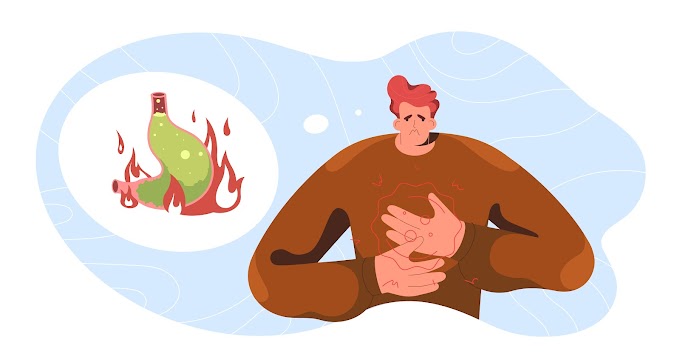Ayurvedic Approach to Gout: Effective Home Remedies for Pain Relief
----
PHOTOGRAPHY BY brgfx
Gout, a form of arthritis, is caused by the accumulation of uric acid crystals in the joints (toes ankles and knees), leading to severe pain and inflammation. In Ayurveda, gout is typically considered a disorder related to an imbalance of the Vatarakta the combination of vata dosha and the rakta dhatu . The treatment approach aims to restore balance and includes dietary changes, herbal remedies, lifestyle modifications, and therapies to alleviate symptoms and prevent future occurrences.
1. What is uric acid and how does it affect your body?
Uric acid is a natural byproduct of the breakdown of purines, which are substances found in various foods and cells of the body. Normally, uric acid dissolves in the blood and passes through the kidneys into the urine for elimination. However, when the body produces too much uric acid or if the kidneys excrete too little of it, it can build up in the blood, leading to a condition called hyperuricemia.
When excess uric acid accumulates in the body, it can form needle-like crystals in the joints and surrounding tissues, resulting in sudden and severe joint pain, swelling, and inflammation. This condition is known as gout, which is a type of inflammatory arthritis.
The crystallization of uric acid typically affects the joints in the lower extremities, such as the big toe, ankles, knees, and feet, causing intense pain, tenderness, and redness in the affected areas. Gout attacks often occur suddenly and can be triggered by factors such as dietary choices, alcohol consumption, obesity, certain medications, and underlying health conditions.
2. Herbs that help to reduce the uric acid from the body:
· Triphala:
(powder)1 tsp 2 times a day after food
or
(tablet) 2 tab 2 times a day after food
· Mahamanjisthadi kwath
(tablet) 2 tabs 2 times a day empty stomach
· Chopchini (smilax china)
(powder) 1 tsp 2 times a day empty stomach
· Giloy
(Tablet) 2 tabs 2 times a day empty stomach
or
(Powder) 1 tsp 2 times a day empty stomach
3. Natural remedies that can provide quick relief from gout pain:
· Fenugreek seeds (paste):
Take 2 tablespoons of fenugreek seeds and soak them in 1 cup of water overnight. In the morning, grind the soaked fenugreek seeds to form a smooth paste. Apply the prepared fenugreek seed paste directly onto the affected joint area. Leave the paste on for 20-30 minutes. Rinse off the paste with lukewarm water. It possesses anti-inflammatory properties and can help reduce pain.
· Castor Oil:
Warm some castor oil and massage gently it onto the affected joint. Cover the area with a soft cloth and leave it on for a few hours or overnight. Castor oil has pain-relieving and anti-inflammatory properties that can provide relief from gout discomfort.
· Turmeric and Milk:
Mix a teaspoon of turmeric powder with warm milk to form a paste. Apply this paste to the affected joint and leave it on for 30 minutes before washing it off. Turmeric contains curcumin, which has powerful anti-inflammatory properties and can aid in reducing gout-related inflammation and pain.
· Cold Compress:
Applying a cold compress or ice pack to the affected joint can help reduce swelling and alleviate pain. Wrap the ice pack in a cloth and apply it to the joint affected area for 15-20 minutes at a time, several times a day.
· Epsom Salt Soak:
Soaking the affected joint in a warm bath with Epsom salt can help reduce pain and inflammation. Add two cups of Epsom salt to warm water and soak the affected area for 15-20 minutes.
Note: Be cautious of potential allergies or sensitivities to specific ingredients. Conduct a patch test on a small area of skin before applying any new paste or remedy to the affected joints. Also, avoid heavy or pressurized massage on the affected joints it can potentially worsen inflammation and cause increased discomfort. Gentle and light massage is advisable to help improve blood circulation.
4. Avoid High-Purine Foods: Limit or avoid foods high in purines such as organ meats, shellfish, and certain types of fish (like anchovies and sardines), as they can contribute to increased uric acid levels. Here are food options that are generally considered to be lower in purines, which can help reduce the risk of gout flare-ups and foods to avoid:
4.1 Food options that can be consumed during gout:
· Fresh fruits & vegetables (opt that has lower purine content)
· Fibre-rich food
· Foods that are rich in Vitamin C – (i.e. drink lemon juice with added jaggery as the sweetener, cherries)
· Low-fat yogurt
· Cucumber
· Green Tea
· Honey (i.e. drink warm water with 1 tsp honey on an empty stomach)
· Carrot
· Ginger
· Garlic
4.2 Foods to avoid during gout:
· Peas
· Cauliflower
· Asparagus
· Brinjal
· Spinach
· Arbi (taro root)
· Ladyfinger
· Mushroom
· Rajma
· Urad dal
· Sugarcane juice
· Nov-veg (red meat, etc)
Note: Avoid these above-mentioned high-purine-rich foods for 1 month to see fast results.
5. Lifestyle Modifications for gout:
· Limit Alcohol Consumption: Alcohol, particularly beer and liquor, can raise uric acid levels and trigger gout attacks. It's advisable to limit or avoid alcohol consumption, especially during gout flare-ups.
· Stay Hydrated: Ensure adequate hydration to help flush out excess uric acid from the body. However, be mindful of sugary drinks and opt for water as the primary source of hydration. Avoid dehydration, as it can lead to the concentration of uric acid in the body, potentially triggering gout attacks. Be Intentional to drink water regularly throughout the day.
· Control Weight: Maintain a healthy weight through regular exercise and a well-balanced diet, as obesity is a risk factor for gout. Avoid crash diets or sudden weight changes, which can impact your uric acid levels.
· Medication Compliance: Adhere to the prescribed medication regimen as directed by your healthcare provider. Do not self-medicate or alter dosages without consulting a healthcare professional.
· Minimize Stress: Chronic stress can contribute to gout flare-ups. Engage in stress-reducing activities like yoga, meditation, and deep breathing exercises to promote relaxation and overall well-being.
· Avoid Sudden Joint Movements: During gout attacks, avoid sudden and strenuous joint movements that can exacerbate pain and inflammation. Opt for gentle movements and rest to alleviate discomfort.
· Sleep: It can significantly impact the management of gout, disrupted or inadequate sleep can contribute to increased stress levels and a compromised immune system, potentially triggering gout flare-ups. Sufficient rest allows the body to repair and rejuvenate, reducing overall inflammation, promoting relaxation and emotional well-being, enhancing the immune system and potentially easing gout symptoms. Aim to sleep at least for 7-8 hours a day.
6. Conclusion:
Managing gout effectively requires a comprehensive approach that addresses not only the symptoms but also the underlying imbalances in the body. Understanding the causes and triggers of gout, such as avoiding high levels of uric acid dietary choices, and lifestyle factors like prioritizing regular exercise, adequate sleep, stress management, and maintaining a healthy weight are integral components of a comprehensive approach to preventing gout-related complications and promote long-term joint health. Focusing on fundamental lifestyle modifications and incorporating Ayurvedic principles alongside conventional treatments can provide a holistic and well-rounded approach to alleviate symptoms and prevent future occurrences. It is crucial to remember that while the information provided in this article aims to offer guidance and support for managing gout, every individual's health needs and conditions may vary. If you experience persistent or worsening symptoms, it is imperative to consult a qualified healthcare professional promptly.








